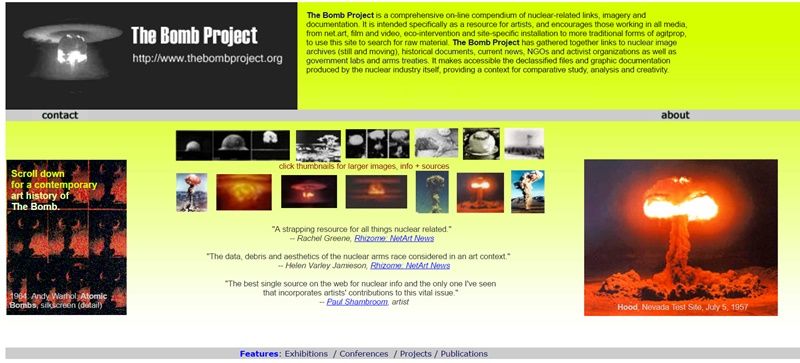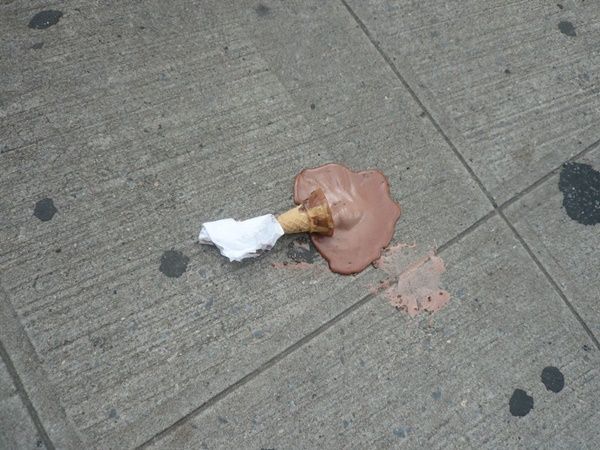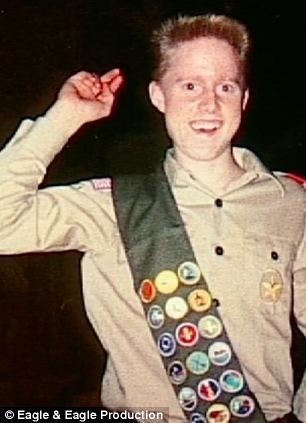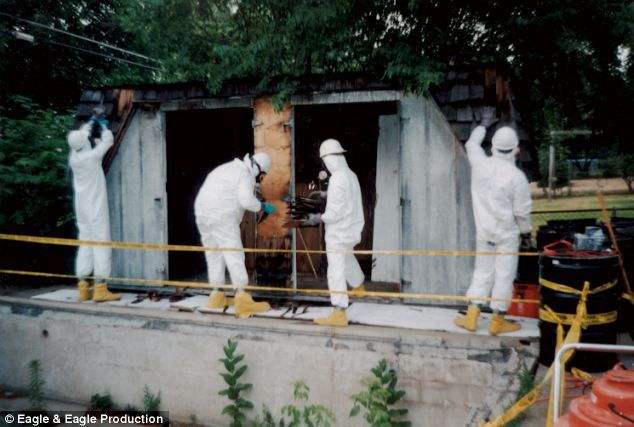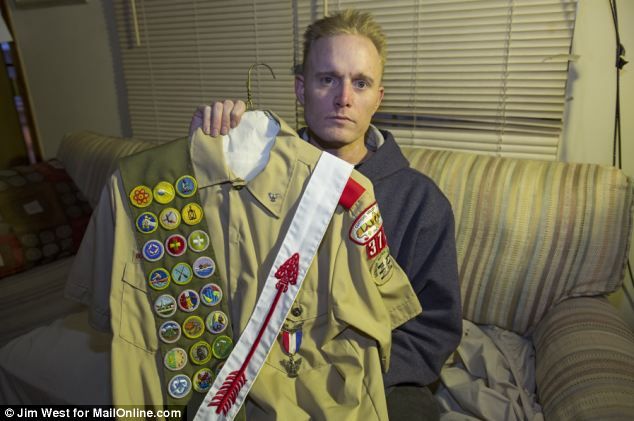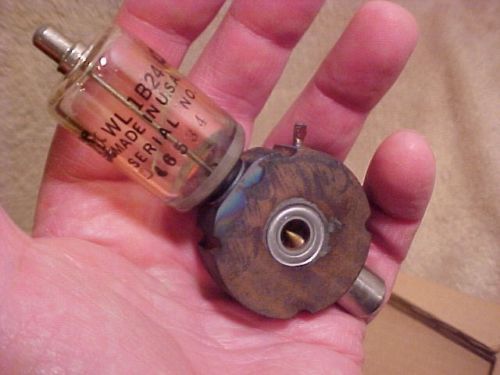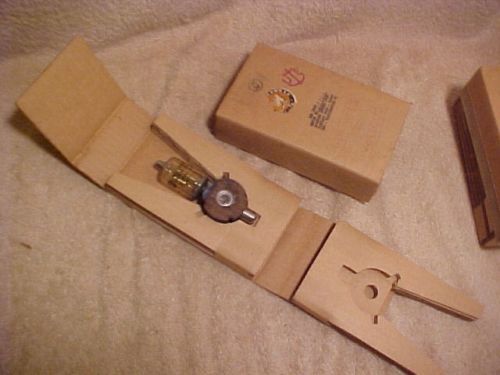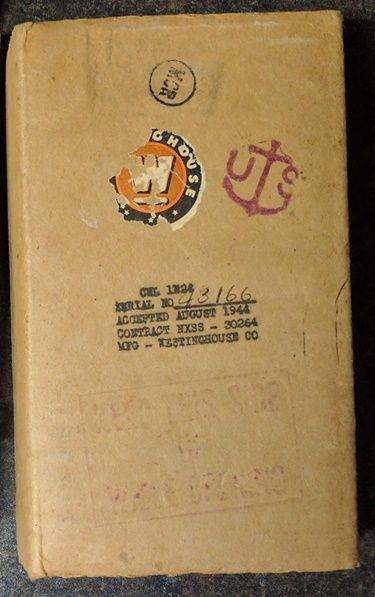- Joined
- Dec 28, 2009
- Messages
- 288
- Points
- 63
It's astounding
Time is fleeting
Madness takes it's toll . . .
>>>>In Medias Res<<<<
This year is the 70th Anniversary of the Successful Test of the First Atom Bomb at the Trinity Site in New Mexico
The Trinity Site is where the first atomic bomb was tested at 5:29:45 a.m. Mountain War Time on July 16, 1945. The 19-kiloton explosion not only led to a quick end to the war in the Pacific but also ushered the world into the atomic age. All life on Earth has been touched by the event which took place here.
The 51,500-acre area was declared a national historic landmark in 1975. The landmark includes base camp, where the scientists and support group lived, ground zero, where the bomb was placed for the explosion, and the McDonald ranch house, where the plutonium core to the bomb was assembled. Visitors to a Trinity Site Open House see ground zero and the McDonald ranch house. In addition, one of the old instrumentation bunkers is visible beside the road just west of ground zero. . .
(Continue reading . . . WSMR Public > Public Affairs > Trinity Site > History)
Trinity Site Open House will be conducted on Saturday October 3, 2015 for the hours of 8 a.m. - 2 p.m with access via the Stallion Gate.
The Trinity site closes promptly at 3:30 p.m.
This event is free and open to the public. No reservations are required.
New Mexico Highway Stallion Gate Entrance at Exit I-25 on mile marker 139 (San Antonio, N.M.) and Visitors are allowed to enter and exit through this gate unescorted during the open house hours. . .
(Continue reading WSMR Public > Public Affairs > Trinity Site)
TAKEmyTRIP.com - Trinity Atomic Bomb Site White Sands Missile Range, NM
------------------------------------------------
Earth Zoom to Trinity Site
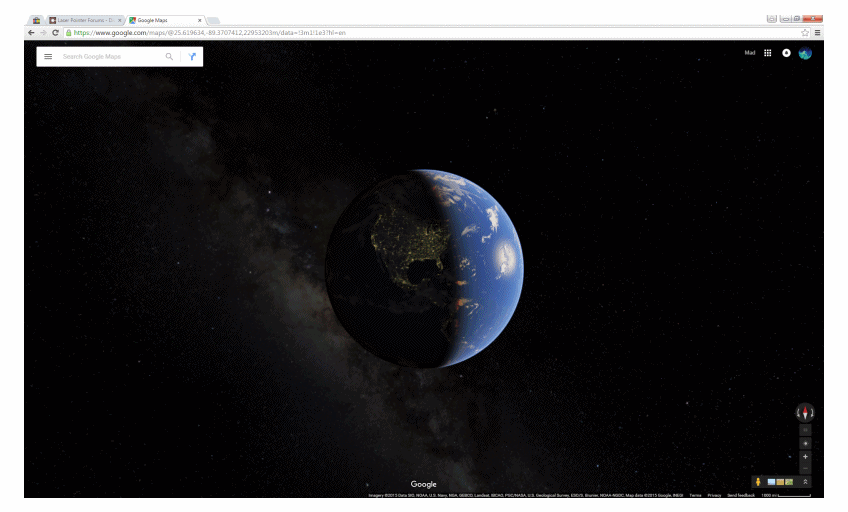
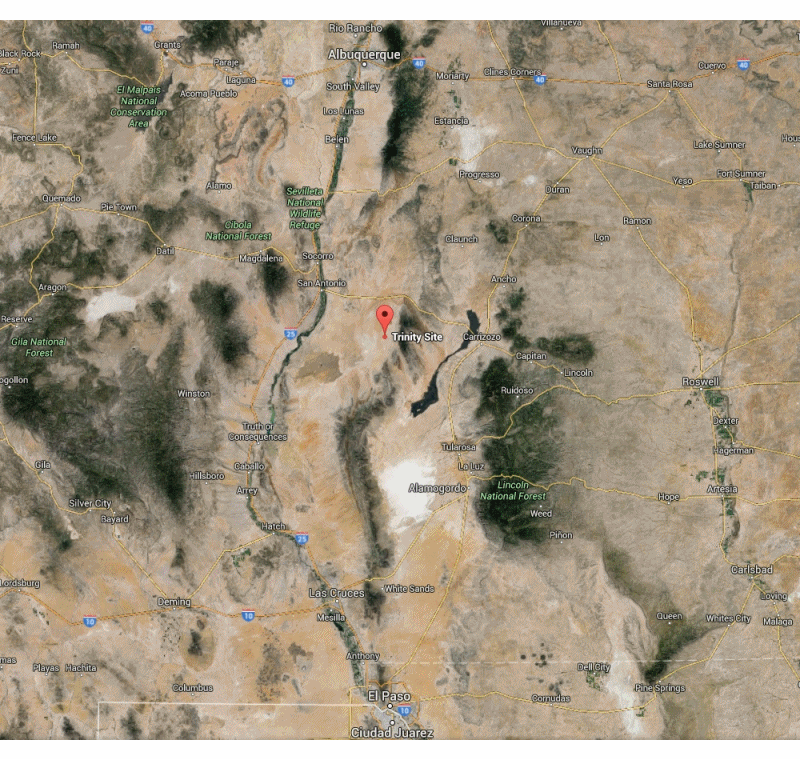
------------------------------------------------
In deciding whether to visit ground zero at Trinity Site, the following information may prove helpful.
Radiation levels in the fenced, ground zero area are low. On an average the levels are only 10 times greater than the region´s natural background radiation. A one-hour visit to the inner fenced area will result in a whole body exposure of one-half to one millirem. . .
(Continue reading . . . WSMR Public > Public Affairs > Trinity Site > Radioactivity)
------------------------------------------------
This is the text of the letter signed by Albert Einstein which was delivered to President Franklin Roosevelt by Alexander Sachs on October 11, 1939. The chief author is believed to be Leo Szilard.
Albert Einstein
Old Grove Rd.
Nassau Point
Peconic, Long Island
August 2d, 1939
F.D. Roosevelt
President of the United States
White House
Washington, D.C.
Sir:
Some recent work by E. Fermi and L. Szilard, which has been communicated to me in manuscript, leads me to expect that the element uranium may be turned into a new and important source of energy in the immediate future. Certain aspects of the situation which has arisen seem to call for watchfulness and, if necessary, quick action on the part of the Administration. I believe therefore that it is my duty to bring to your attention the following facts and recommendations.
In the course of the last four months it has been made probable--through the work of Joliot in France as well as Fermi and Szilard in America--that it may become possible to set up a nuclear chain reaction in a large mass of uranium, by which vast amounts of power and large quantities of new radium-like elements would be generated. Now it appears almost certain that this could be achieved in the immediate future.
This new phenomenon would also lead to the construction of bombs, and it is conceivable--though much less certain--that extremely powerful bombs of a new type may thus be constructed. A single bomb of this type, carried by boat and exploded in a port, might very well destroy the whole port together with some of the surrounding territory. . .
(Continue reading . . . WSMR Public > Public Affairs > Trinity Site > Einstein´s Letter)
Members of the Manhattan Project
Albert Einstein- Originally was a German Scientist but left Germany to escape persecution. Told Franklin D. Roosevelt about how Germany might be planning to build an atomic bomb. Enrico Fermi - originally an Italian Scientist escaped from Fascist Italy to come to American. He helped Einstein convince Roosevelt how Germany might be trying to build an atomic bomb.
Leadership Group - Robert Oppenheimer and project leader
Theoretical Group - Eugene Wigner
Physics Group - Enrico Fermi
Chemical Group - Samuel Allison. . .
[
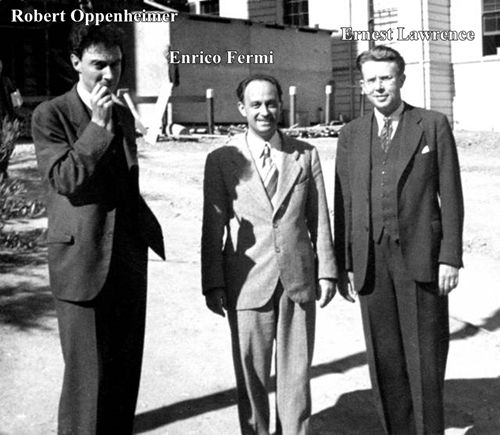

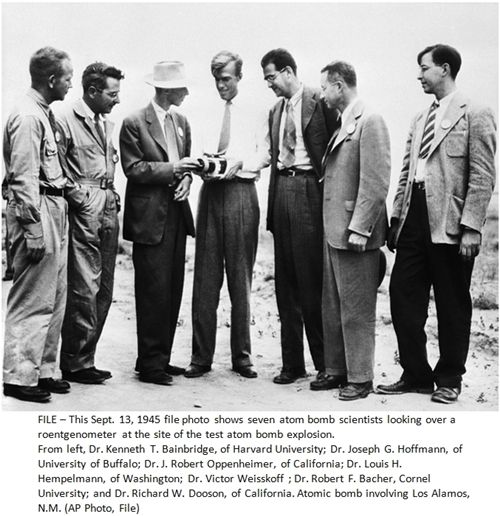
(Continue reading . . . Members of the Project)
------------------------------------------------
Commissioning of the Trinity Site
On Monday morning July 16, 1945, the world was changed forever when the first atomic bomb was tested in an isolated area of the New Mexico desert. Conducted in the final month of World War II by the top-secret Manhattan Engineer District, this test was code named Trinity. The Trinity test took place on the Alamogordo Bombing and Gunnery Range, about 230 miles south of the Manhattan Project's headquarters at Los Alamos, New Mexico. Today this 3,200 square mile range, partly located in the desolate Jornada del Muerto Valley, is named the White Sands Missile Range and is actively used for non-nuclear weapons testing.
Before the war the range was mostly public and private grazing land that had always been sparsely populated. During the war it was even more lonely and deserted because the ranchers had agreed to vacate their homes in January 1942. They left because the War Department wanted the land to use as an artillery and bombing practice area. In September 1944, a remote 18 by 24 square mile portion of the north- east corner of the Bombing Range was set aside for the Manhattan Project and the Trinity test by the military. . . .
(Continue reading . . . Trinity Atomic Web Site )
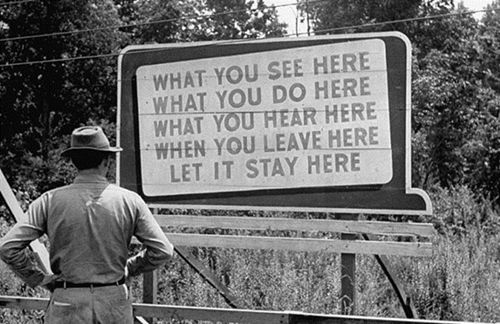
Oak Ridge, the Manhattan Project facility where uranium was purified| Photo: Life/Ed Clark, 1945
------------------------------------------------
Building the First Atomic Bomb in an Old Ranch House and Hoisting it up the 100’ Test Tower
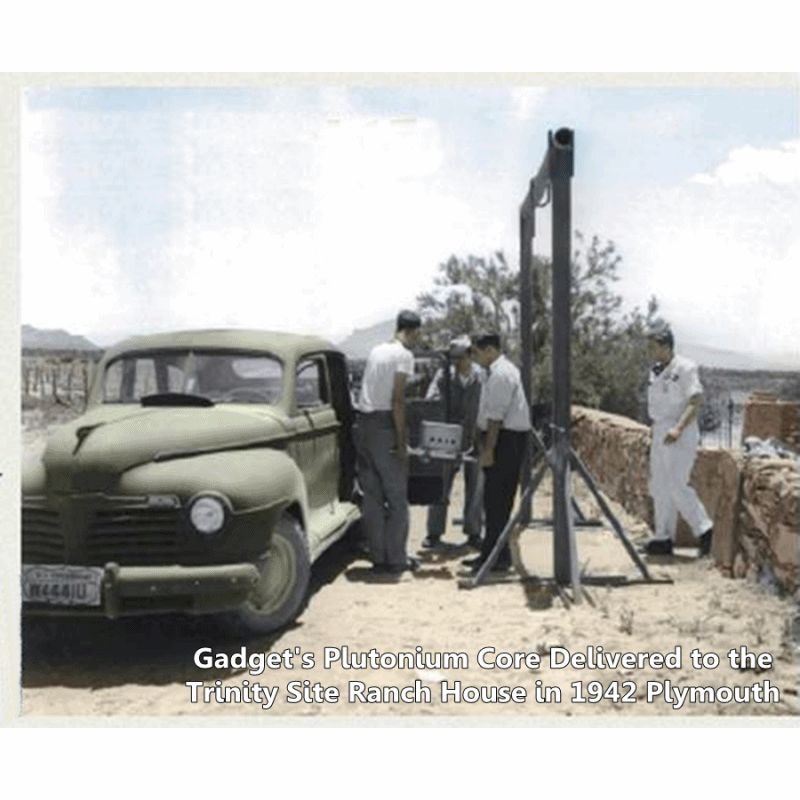
------------------------------------------------
An Eye Witness Accounting of The First Atomic Test
((Smith watched from Compania Hill near present-day Stallion Range Center))
INTER-OFFICE MEMORANDUM
DATE: 5 September 1945
TO: File
FROM: Ralph Carlisle Smith
SUBJECT: Comments on Trinity Test Shot Trip.
At about 1945 MWT, 15 July 1945, the coordinating council started from the Los Alamos Technical Area, riding in a three bus convoy with three G.I. sedans driven by Convoy Commander Captain George Turner, Mr. David Dow, and Dr. Earl Long and with a G.I. truck carrying spare equipment. The first stop was at the Camel on the Santa Fe Road. Then through back roads of Santa Fe to outskirts of Albuquerque where we stopped twenty minutes for convoy to be reassembled. The truck had broken down and the sedans stopped to get passengers at Santa Fe (Dr. C.A. Thomas).
We then proceeded to Wilson´s garage to get gas, remaining in Albuquerque for about 45 minutes -- the passengers wandering about town. At the Hilton, Sir James Chadwick, William Laurence, William Fouler, Tom Lauritsen, Charles Lauritsen, Major Ackerman, and an Army Captain (S-2) awaited to convoy. 2nd Lt. Dazzo (S-2) was there but was returning to Los Alamos.
We proceeded to Trinity (just beyond San Antonio, N. Mex) on Route U.S. 385 at a turn off marked Harriets Ranch. We were first stopped at the bivouac of Major T.O. Palmer´s Special Detachment of Engineers, who were stationed there for any emergency such as evacuation of personnel. After a brief check we proceeded to the Military Police Post No. 2 which was about 20 miles from zero point and about ten miles from the Trinity Base Camp. This was approximately 0200 to 0230 16 July 1945. About 0500 the searchlights allegedly at 6 miles from zero point started playing about, apparently fixing cloud elevation. At about 0520, the warning came by radio that the test was about to take place in 10 minutes. 1st Lt. Schaeffer, a civilian, and I stretched out on a blanket facing south to the spot where the several searchlights seemed to be focusing on the ground. A glow was appearing in the sky toward the East so that the mountain range stood out quite distinctly. The road was to our right and the buses to the rear of us. It was bright enough that you could identify people several hundred feet away.
1st Lt. Huene fired a rocket at minus six minutes and again at minus three. The latter did not explode in the air, hence another rocket went up about minus one minute. About then you could hear the warning siren at the bivouac area. I was staring straight ahead with my open left eye covered by a welders glass and my right eye remaining open and uncovered. Suddenly, my right eye was blinded by a light which appeared instantaneously all about without any build up of intensity. My left eye could see the ball of fire start up like a tremendous bubble or nob-like mushroom. I Dropped the glass from my left eye almost immediately and watched the light climb upward. The light intensity fell rapidly hence did not blind my left eye but it was still amazingly bright. It turned yellow, then red, and then beautiful purple. . . .
(Continue reading . . . WSMR Public > Public Affairs > Trinity Site > Eyewitness Account )
------------------------------------------------
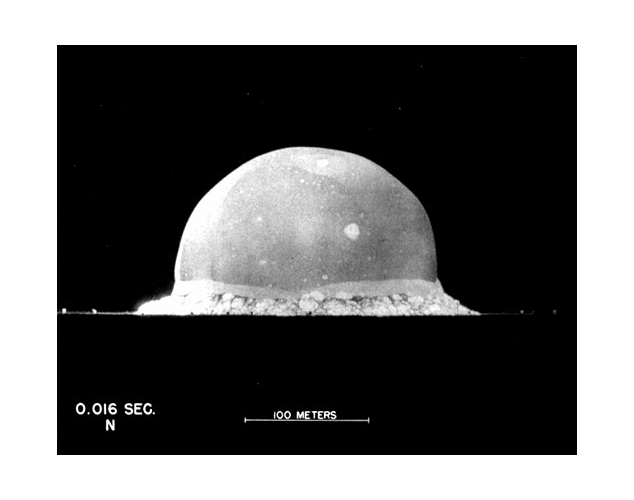
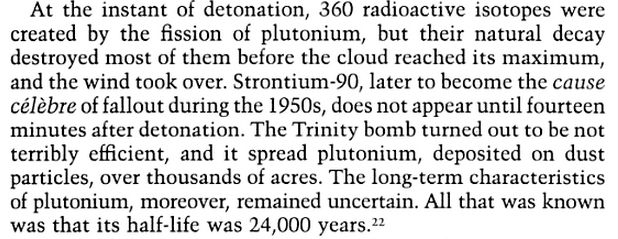
------------------------------------------------
Aerial Views of The Blast Zone
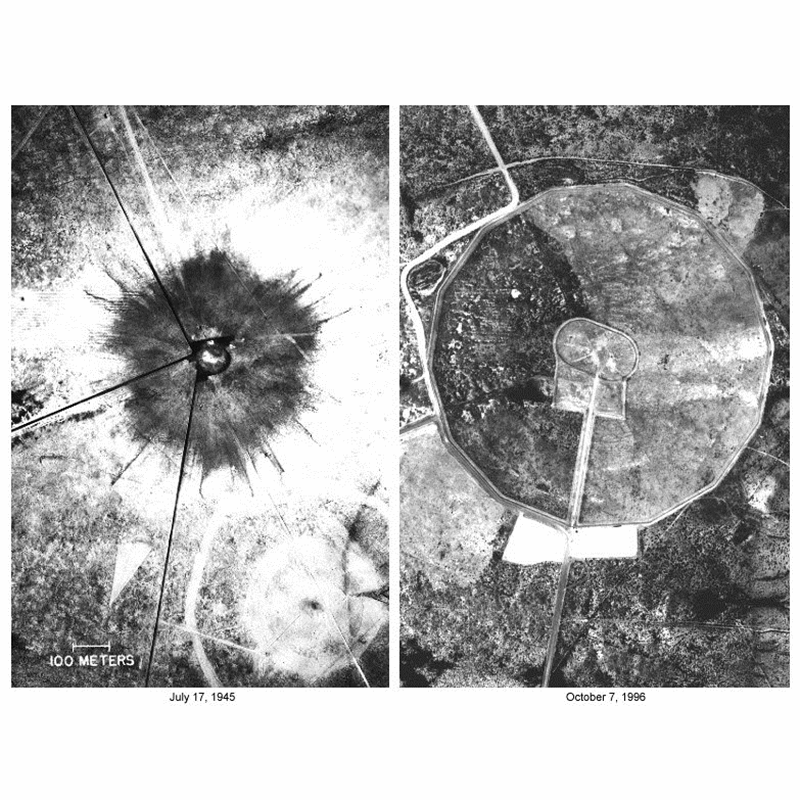
------------------------------------------------
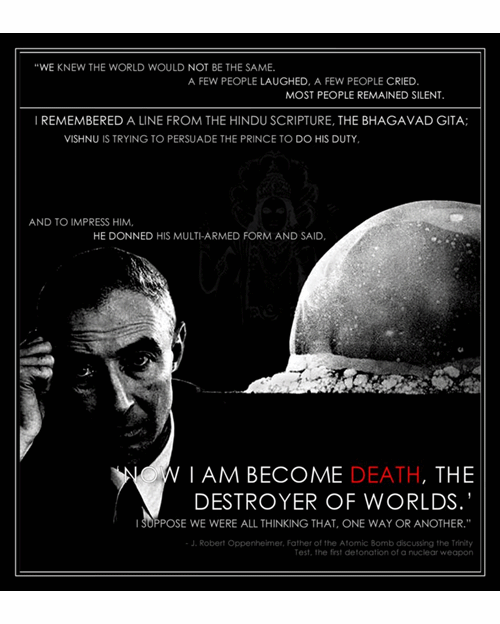
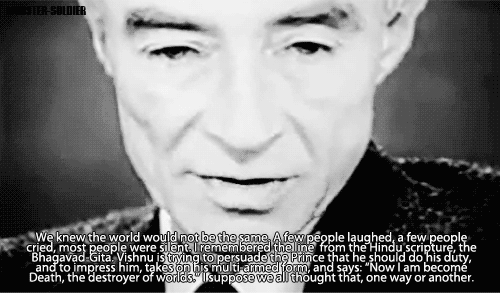
------------------------------------------------
At Ground Zero Two Months Later
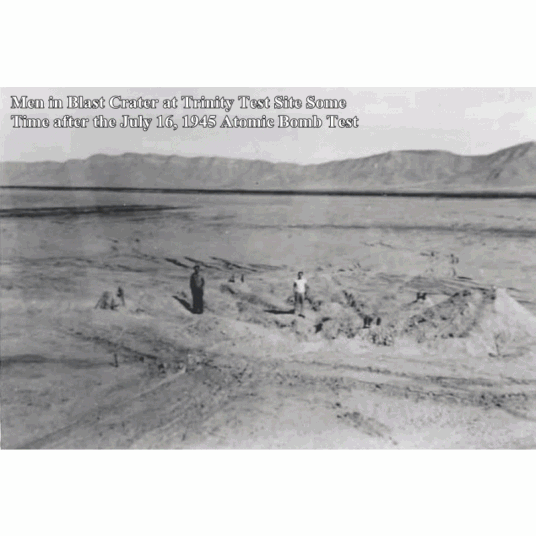
------------------------------------------------
Even though . . .
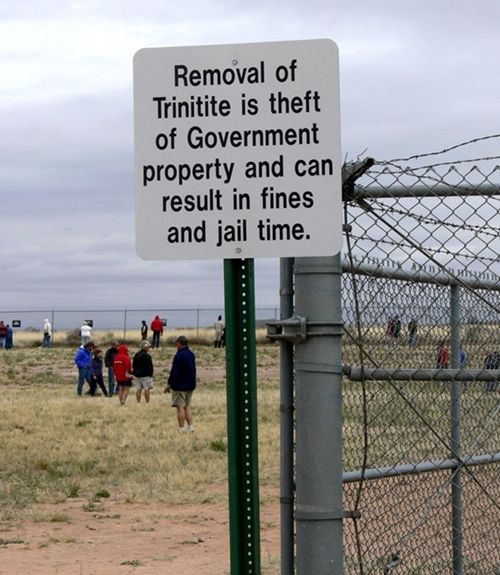
Trinitite was easily collected by the public from the Trinity Site after the government abandoned it with the ending of WWII, that is for those so inclined to willfully drive way the heck out into the absolute bloody middle of nowhere to pocket the stuff that was also a lot more radioactive back then before the short half life isotopes faded out. As such, the crater of green glass (Trinitite as it became known) remained untouched until 1953, when the AEC had the site cleaned up and the green Trinitite glass buried several miles south of the site. The crater, 2400 feet in diameter, and ten feet deep, was then filled in and graded. A fence, today known as the outer perimeter fence, was erected, and signs were posted restricting the site.
(Continue Reading . . . The Trinity Site at NotPurfect.com)
Trinitite, also known as atomsite or Alamogordo glass, is the glassy residue left on the desert floor after the plutonium-based Trinity nuclear bomb test on July 16, 1945, near Alamogordo, New Mexico. The glass is primarily composed of arkosic sand composed of quartz grains and feldspar (both microcline and smaller amount of plagioclase with small amount of calcite, hornblende and augite in a matrix of sandy clay) that was melted by the atomic blast. It is usually a light green, although color can vary. It is mildly radioactive but safe to handle.
In 2005 it was theorized by Los Alamos National Laboratory scientist Robert Hermes and independent investigator William Strickfaden that much of the mineral was formed by sand which was drawn up inside the fireball itself and then rained down in a liquid form. In a 2010 article in Geology Today, Nelson Eby of University of Massachusetts at Lowell and Robert Hermes described Trinitite:
Contained within the glass are melted bits of the first atomic bomb and the support structures and various radionuclides formed during the detonation. The glass itself is marvelously complex at the tens to hundreds of micrometre scale, and besides glasses of varying composition also contains unmelted quartz grains. Air transport of the melted material led to the formation of spheres and dumbbell shaped glass particles. Similar glasses are formed during all ground level nuclear detonations and contain forensic information that can be used to identify the atomic device.
A number of different types of Trinitite have been identified. Green is the most common form. Black contains iron from the tower structure. Red contains copper from the device used in the blast or from the communications cables that led away from the site. Both black and red specimens are extremely rare. Rounded "pearls" also are found, which come from melted silica that returned to solid form before hitting the ground.
The glass has been described as "a layer 1 to 2 centimeters thick, with the upper surface marked by a very thin sprinkling of dust which fell upon it while it was still molten. At the bottom is a thicker film of partially fused material, which grades into the soil from which it was derived. The color of the glass is a pale bottle green, and the material is extremely vesicular with the size of the bubbles ranging to nearly the full thickness of the specimen.
------------------------------------------------
And Now for the Good Stuff
Here are five Trinitite specimens I have been able to collect so far.
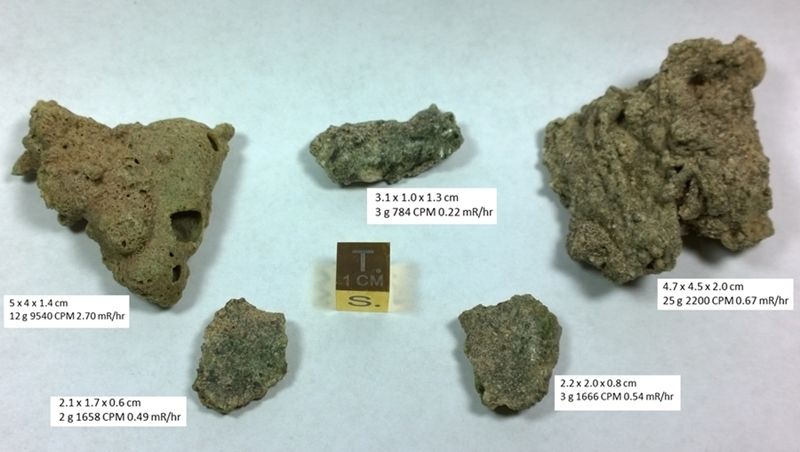
The 3 gram piece at top middle I bought from UnitedNuclear.com The other four I found at a rock shop in Roswell, NM last month. It seems the owner, Donald James, acquired a handful of Trinitite from an estate sale of an old New Mexico rancher that had collected the stuff himself back in the late 40’s.
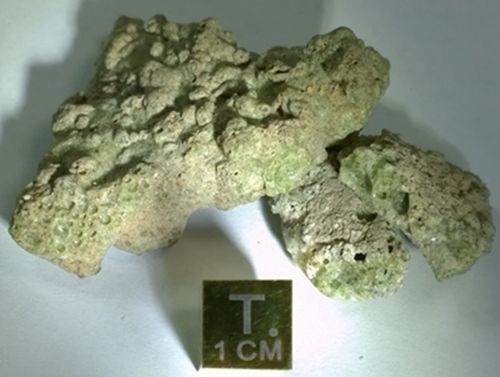
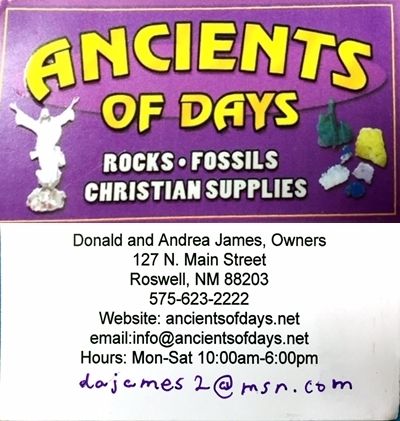
Donald has been super to work with and expressed he will be glad to fill mail orders should anyone wish to contact him for doing so.
He has the specimens priced listed by size, as is the norm among mineral dealers. I used my SEI Inspector radiation detector and spent some time sorting through what he had in order to be able to share what I found with you guys.
I have to state a disclaimer though as the Trinitite readings can vary significantly between just slightly different angles of measurement. Something else worth noting is the fact the Trinitites "smooth side" (being as that side was facing the million degree blast) usually is multiple times higher in count than the much courser reverse side. So figure at least a plus or minus 10% of the CPM numbers I have shown shown.
The first two images are the remainder of the larger specimens and the third image is of the few that fall within a middle size. There are about 30 or more small pieces (no images of) about a square centimeter weighing less than a gram, the majority of which at this size read about 200 CPM, some a gnats ass more or so. These are priced mostly around $10.



------------------------------------------------
2013 - Nuclear and Radiological Analysis of Trinitite by Georgia Tech Under Grad
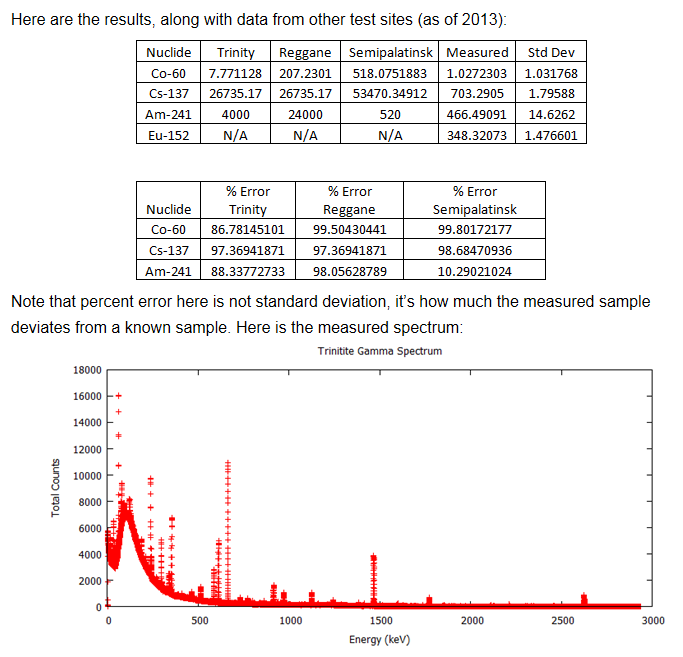
------------------------------------------------
Here are a few other sources:
Mineralogical Research Co.
Paul Swartz at Tucson Meteorites
Radioactive Things
Some really nice large pieces but, holy atomic glass batman, look at the prices!
And as a further disclaimerary, May the Buyer Beware as there have been reports of unscrupulous sources engaging in pawning off fake Trinitite to willingly and unwitted buyers.
btw - I will follow up with anything interesting I may find while kicking some atomic glass at the site's open house next Saturday.
Last edited:




